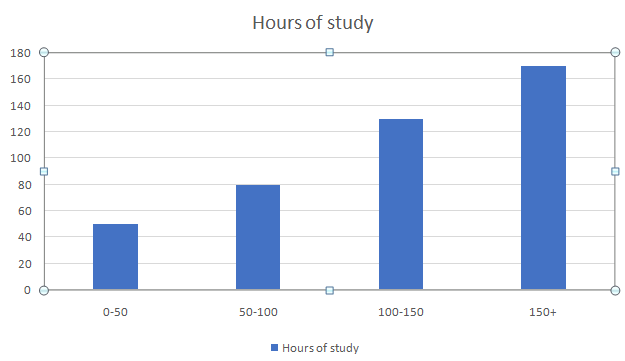Most of the GMAT Courses available in the market offer 10 to 12 week GMAT Study programs. Some of these courses include PythaGURUS Education, Jamboree, The Princeton review, Byju’s, e-gmat, Crackverbal, and many more. While most of these courses are 2 to 3 months long, an average Indian applicant studies for more than 5 months. In my experiences, I have seen people study for GMAT for more than a year as well primarily because of the lack of a study plan.
Some applicants take extended breaks from GMAT preparation because of work and personal priorities. Imagine taking a 3 week break after 5 weeks of intensive GMAT Preparation. This won’t help. Although you will be seen as someone preparing for GMAT, and someone who is committed to a future, in reality you will be nothing more than someone who goes to gym 8 times a month and calls himself a regular.
The idea is not to make GMAT a part of your long-term life. The idea is not to have this test hang over your head more a considerable span. The idea is to take your preparation to a certain level, touch your peak levels, and perform on the final day. If you do not make a plan, GMAT preparation can get very boring too.
It can get boring because deciding to take the GMAT is a big step. Most people who take the GMAT are people working 10-7 jobs if not longer. In addition to that, their decision of taking the GMAT calls for more hours of rigorous study schedules. For how many months can you maintain this schedule?
But how do you ensure that whatever you’re learning at the end of a long work-day will count towards your final result on the GMAT. In fact, you might not even feel like studying.
This is why I advocate having a GMAT study plan. When you have a GMAT date set, and a study plan to go with it, you would have already done most of your research regarding why you need to put in a particular amount of time for your prep
.
Once you know this information, you will have no option but to study every day without fail as you know the volume of work that lies ahead of you.
Also, having a study plan can help you optimize your result. You will track your progress, and make necessary changes to your study material and schedule because of the provisions made for the same in your study plan.
It will also help you to bring quality in your study time and a chance to have some breaks form the workload instead of consuming all your time and still making no real progress.
But formulating a study plan can be hard. This is why I wish to share a sample study plan with you which you can tweak as per your personal preferences.
But before we get to the sample study plan, we need to have some other information handy to make the tweaks in the end.
GLOBAL AVERAGE GMAT SCORES OF TOP 50 US PROGRAMS: HOW MUCH SHOULD YOU AIM FOR ON THE GMAT?

This is a very important step. Anyone working with GMAT students and testing can vouch for the idea of having a GMAT goal score before you start prep.
This is crucial to some of the steps that come next. Right now, don’t concern yourself with how much can you probably score on the test. Instead, look at how much you want to score.
If you are an Indian male applicant with 3+ years of experience at the time of starting your preparation, and are keen on joining schools such as Duke, Darden, Tuck, Stern, UCLA, ISB, Haas, you should target a GMAT Score of 730 or above. These schools are in the Lower A category, and for an Indian male applicant, a score of 730 may not be stellar, but it is still in a reasonable range. Similarly, if you are an Indian female applicant with 2.5 years of work experience at the time of starting your GMAT preparation, you should target a score of 710/720 +.
Most of these schools have GMAT averages of 700 and it is important for an Indian male applicant to be 25 points above the global average of these programs. See the table below. Remember, the numbers below in the table are from last year, and are the global averages. In order to maintain a global average of 700, the admissions committees of these programs need Indian applicants with at least 20 to 30 points higher than the global average.
| Rank & School | 2018 GMAT Average |
|---|---|
| 26. Vanderbilt (Owen) | 678 |
| 27. Georgia Tech (Scheller) | 681 |
| 28. Washington (Olin)< | 693 |
| 29. Notre Dame (Mendoza) | 671 |
| 30. Minnesota (Carlson) | 682 |
| 31. Arizona State (Carey) | 694 |
| 32. Penn State (Smeal) | 657 |
| 33. Wisconsin | 670 |
| 34. BYU (Marriott) | 672 |
| 35. Michigan State (Broad) | 668 |
| 36. Ohio State (Fisher) | 676 |
| 37. UC-Irvine (Merage) | 667 |
| 38. Purdue (Krannert) | 633 |
| 39. Rochester (Simon) | 666 |
| 40. Maryland (Smith) | 640 |
| 41. SMU (Cox) | 653 |
| 42. Boston (Questrom) | 681 |
| 43. Georgia (Terry) | 665 |
| 44. Pittsburgh (Katz) | 621 |
| 45. Texas-Dallas (Jindal) | 678 |
| 46. Texas A&M (Mays) | 643 |
| 47. Florida (Hough) | 680 |
| 48. Boston College (Carroll) | 637 |
| 49. UC-Davis | 671 |
| 50. Rutgers | 683 |
TAKE A DIAGNOSTIC TEST
So, you have decided you goal score, now comes the time to find out your base score. The base score is where you stand intellectually regarding the GMAT. It is the measure of what you already know before starting your GMAT prep.
Take a GMAT mock test. You can take one for free on MBA.com, the official site for GMAT.
Let’s assume you scored a 560 on your mock test. You now have an idea of how hard the GMAT really is.
This time we’ll decide if we want to tweak our goal score. All of us know what we’re capable of. We have an idea of our aptitude but who wouldn’t like to go to Harvard Business School? What I’m trying to say is that having an unrealistic goal score is a possibility. But it can be fixed at this step.
If you have a GMAT coach or tutor, ask them to assess your potential goal score from your performance on the mock test. If you’re prepping on your own, do not fret. You can change your goal score towards the end of your prep as well.
HOW MANY HOURS SHOULD YOU STUDY?
Who scores well on the GMAT? Someone who studies 120 hours? Or someone who studies 60 hours?
Neither. The hours you study for your GMAT cannot guarantee your success alone. GMAT is a test of ability, endurance, and strategy. GMAT prep might seem as simple as putting in numerous hours and studying every concept four times, but it is far from it.
The hours of studying you require to get your goal score depends on the difference between your goal score and your base score. This is the average time that a group of GMAT test-takers took to improve their score approximately the same points as you wish to.

The x-axis shows the score improvement that the test taker is looking for and the y-axis represents the average hours they study for it.
SAMPLE STUDY PLAN
For our sample study plan let’s assume you need to study for 100 hours to achieve you goal score on the GMAT. How do you go about it?
Here is a 100-hour long study plan for you to use as a blueprint to customize according to your requirements. I will explain customizing this study plan right after I share the plan with you.
Hours 0-8
This is a very important step even if it doesn’t feel like that once you read it. Research!
I want you to spend the first few hours of your GMAT prep, researching about the GMAT. Find out the right books to buy, the strategies to follow throughout your prep, and the format and scoring algorithm of the GMAT.
To score well on the GMAT, you don’t only need to be prepared with all the concepts that the test evaluates but, also need to have the right strategies in place for things like running out of time or guessing on the test.
This initial research will help you do that. Make sure to bookmark any blogs or articles that contain strategies you could use in the test.
Hours 9-28
Since you took the mock test before starting your GTA prep, you know which section you need to work more on; Quant or Verbal.
we suggest starting with the weaker section always. You are freshly starting your GMAT prep and are more receptive to new information and knowledge. This is why dealing with the weaker section should be the priority.
These 20 hours should be spent purely on learning concepts or grammar rules, and practicing question on the section you’re weaker at, be it Quant or Verbal.
Hours 29-40
It’s time to deal with the section that you have better control on.
These 12 hours are, do not even think about the weaker section. leave that one behind for a few days as you strengthen the concepts that you already know and learn any new ones that pop up
Practice test (5-6 hours)
Hours 41- 80
This is the time we start applying every single strategy we had learnt in the beginning of the study plan. The 40 hours of prep in this section doesn’t have to be based specifically in the Verbal, Quant, IR, or AWA section.
This is where you must bring together the test as a whole, and spend time practicing questions and analyzing your, mistakes.
Every question you answer now, should be answered following all the best GMAT prep strategies and time management strategies.
This is also the time that you can go through and strengthen any concepts that still need working on.
Practice test (5-6 hours)
Practice test (5-6 hours)
Hours 81-100
These 20 hours I would spend doing practice sets, following all the strategies that work for me and making guessing strategies.
Everyone guesses on the GMAT. At least everyone who scores more than 700. Don’t believe me? Go ask a top scorer, on any GMAT forum, if they guessed on questions.
This is because guessing is a strategic play when it comes to the GMAT. Guessing gives you a chance of getting the question right without working on it. There are times when you will be pressed for time. I am sure of it because I have never met anyone who said they had enough time to attempt every single question on the GMAT.
So, when that time comes, you better be ready to guess because when you leave un-attempted questions, the GMAT penalizes you more than it would if you answered in-correctly.
Now, you could come up with your own guessing strategy but I would like to share mine with you.
Remember the weakest concepts I asked you to pick out in the previous points? Guess on those. Spend roughly 40 seconds to a minute on questions that you have almost always gotten wrong during GMAT prep and if you still don’t have a plan of action for them, just take a guess.
If you’re sure about getting every other you attempt answer right, I would suggest guessing straightaway without even the one-minute.
Practice test (5-6 hours)
How to take mock tests?
Just sitting down for a three-hour test isn’t the best way to optimize your benefits form the GMAT mocks. Having a pattern for taking a mock test will ensure you get the most out of the three or so hours you spend on the test rather than just knowing your current score. Your environment for your mocks and your approach to them should be like that of the actual test.
Take breaks and select the same section order that you would select on the actual test.
Something we need to establish is taking a mock test during any time of the day as you please shouldn’t be a habit.
When you select your date and time-slot for the GMAT, let’s assume you selected a morning slot for it. Taking your mocks on the same time-slot as the one you selected will help you identify any problems you might face on test day.
If you feel sleepy when you take your GMAT mocks during the morning, chances are you will feel sleepy during the actual test as well. Since you know about this issue now, you can try to figure out ways to deal with it.
The second point to remember while taking a mock test is to make sure you practice every single GMAT strategy you have learnt. This will also help you eradicate any strategy that isn’t working for you anymore and replace it with a fresher version.
Once you’re done with the test, analyze every mistake you’ve made on it.
Why are practice tests 5-6 hours?
Progress on the GMAT is measured quite differently. You might breakthrough to a 100-point improvement in 1 month and take the other 1.5 months to improve the next 30+ points.
Also, as you keep going higher on the score range, improvement will get harder, but with the right diagnostics of error, you will be able to make it. This is why practice tests are so important. Taking practice tests can help you map your progress.
Although taking practice tests alone is not going to help you. You will also require to analyze these practice tests to understand the pattern of your weakness so that improvements can be made. This is what the additional 1-2 hours on the practice test are for.
HOW TO TWEAK THE SAMPLE STUDY PLAN?

Tweaking this study plan is quite simple. Since o have only mentioned the numbers of hours a particular section should receive, all you need to do is convert all the values in relevance to the total number of hours you are supposed to spend prepping for the GMAT.
For example, if you have to study only 80 total hours to make your improvement on the GMAT, cut down the time of every section by 80%. So, where you would spend 10 hours prepping for Quant before, now, you should only give it 8 hours.
Another thing you would require to add to this study plan is the days that these hours will be spread over.
You can spread these 100 hours over one month and have yourself an extensive GMAT study plan. With three practice tests lined up throughout the study plan, you would have to divide the 100 hours by 27 days to get an idea of how many hours you would require to study every day to reach your goal score. this would give you a hectic 4 hours of prep every day.
I say hectic because most people prep for their GMAT along with jobs.
For a more relaxed and well-paced study plan, divide these study hours over 3 months. Bringing your study time down to two hours a day, except for test days, will allow you to take a break from studying every couple of days. It will also free up many of your weekends for any prep classes you wish to join or just to break out of the pattern of working all day and studying at night.
This longer study plan would also help you avoid any GMAT burnout.
GMAT isn’t the end all of your career and scoring well on it isn’t the only thing that can help you be successful. But, if you have decided to give this a shot, and are willing to pay the $250 registration fee, why not give it your best?
People also often believe that GMAT prep means you would have no social life for a few months. But as you must have noticed form the study plan above, it’s not true.
GMAT is more strategic and tests you on concepts that you have learnt all through school. Which is why some students score over 700 on their first attempt and others almost never get that close.
Following a GMAT plan is the first step to scoring high on the GAT without having to spend a lifetime preparing for it.





